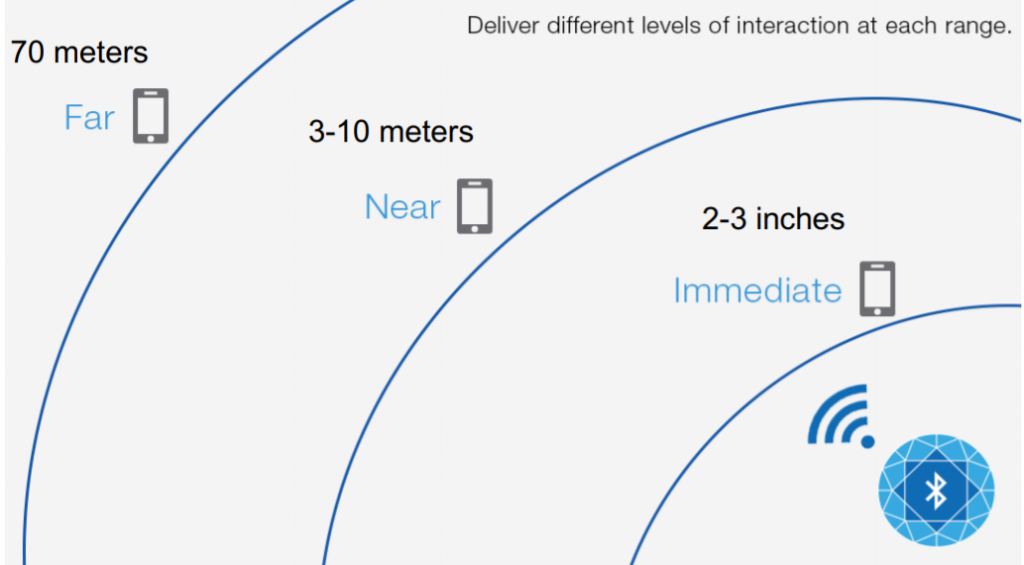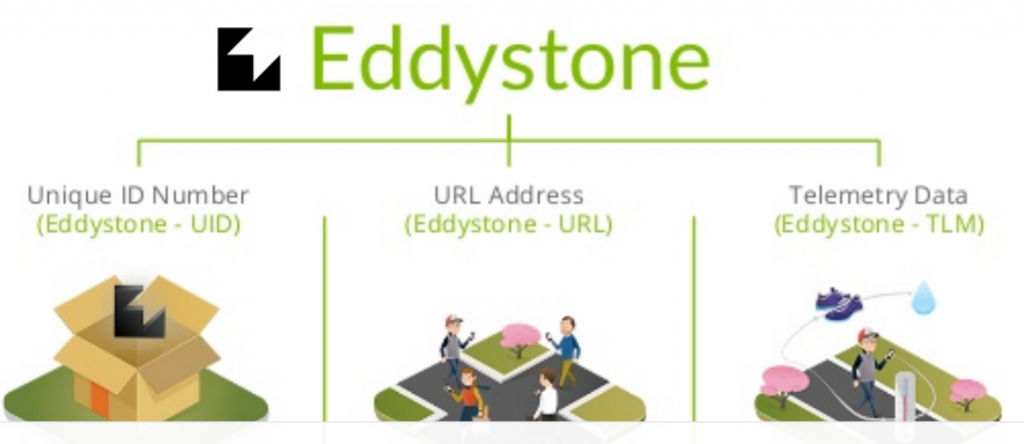Our research from last week mostly focused on three aspects: BLE beacon, POS system, and how the mobile app can communicate with the two. And here we would like to talk about the secrets under BLE beacon technology.
How BLE beacon works

Beacons transmit small packets over BLE. BLE messages wake up listeners in BLE devices (e.g., smartphones) to read the packet. Then based on the received signal, the smartphone determines the proximity of the Beacon and takes an action based on the content of the message.
Types of message that beacons can broadcast
Beacons generally broadcast three types of messages: Unique ID number, URL address, and Telemetry. UIUD Contains a unique 16-byte Beacon ID composed of a 10-byte namespace ID and 6-byte instance ID.
Recognizes every particular Beacon across the globe thereby
enabling an application to listen and perform. For a live example, If a brand installs beacons at its stores, then the app could be designed to connect with beacon at its specific store, through the use of beacon ID. Once identified, the brand’s store would be able to send in the customized content or offers to the user.

The second type of broadcast uses a compressed encoding format that picked up by either the physical web app or the google chrome widget. Overcomes Bluetooth Beacon’s obstacle of needing an app.
Stores can send an URL to the user’s phone and users can look up the coupon or information in a web browser. Currently, Chrome is supported, other browsers to follow.

The last type of message contains Telemetry Data (TLM) – Used to pass
on Device Information. It is intended for Beacon fleet management:
• Comprises data about beacon hardware
• Battery Voltage
• Temperature
• Packets/Activity since the last reboot
• Uptime since the last reboot
• Broadcasts less frequently than data packets
• Makes it easier to keep a tab on Beacons health and status

A History Lesson
Apple came up with its Beacons technology (called iBeacon) quietly in 2013
and Google came up with its Eddystone Beacon technology in 2016.
By 2018, Google officially killed Eddystone. iBeacon also disappeared!

So what happened? The reasons behind it are somehow complicated, but in a nutshell: Nearby notifications killed the Physical Web Project. However, this by no means says Beacons are gone away. We will discuss more details about it in our next blog post. If you are eager to know more information, check out this blog post: https://deviceatlas.com/blog/physical-web-dead-long-live-physical-web.